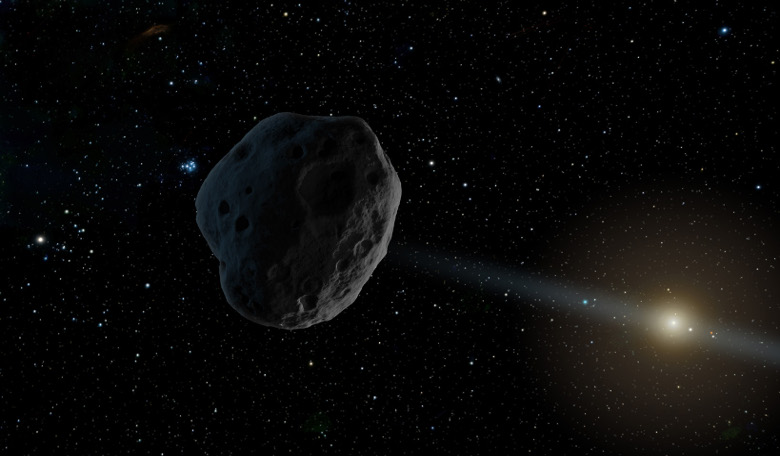Two previously unknown objects have been spotted traversing our neighbourhood by NASA’s NEOWISE mission, one of which will swing just inside Earth’s own orbit, while the other should be visible with binoculars next week.
The object that will approach Earth's orbit on Feb. 25, 2017, at a distance of nearly 51 million kilometers (32 million miles) from our planet, is known as 2016 WF9. 2016 WF9 will travel into the interior of the Solar System passing under the main asteroid belt and past Mars until it swoops just inside Earth's own orbit over the course of the next 4.9 years.
The origin of 2016 WF9 is not entirely known and its designation has been placed on the fuzzy line between an asteroid and a comet. As a dark body, roughly 0.5 to 1 kilometre (0.3 to 0.6 miles) across, 2016 WF9 resembles a comet in its reflectivity and orbit, but appears to lack the characteristic dust and gas cloud that is associated with a comet. "2016 WF9 could have cometary origins," said Deputy Principal Investigator James "Gerbs" Bauer at JPL. "This object illustrates that the boundary between asteroids and comets is a blurry one; perhaps over time this object has lost the majority of the volatiles that linger on or just under its surface."
Despite its mysterious ancestry, the trajectory of 2016 WF9 is well understood, and its path as it heads towards Earth is not deemed a threat for the foreseeable future.
C/2016 U1 NEOWISE on the other hand, has the tell-tale dust dispersal signatures of a comet as it nears the Sun. Discovered a month earlier, C/2016 U1 NEOWISE will be in the southeastern sky shortly before dawn as seen from the northern hemisphere during the first week of 2017 and according to Paul Chodas, manager of NASA's Center for Near-Earth Object (NEO) Studies at the Jet Propulsion Laboratory in California, "has a good chance of becoming visible through a good pair of binoculars, although we can't be sure because a comet's brightness is notoriously unpredictable.”
C/2016 U1 NEOWISE will reach its closest point to the sun – inside the orbit of Mercury – on 14th Jan 2017. Catch it while you can as shortly afterwards it will head back out to the outer reaches of the solar system for an orbit lasting thousands of years.
NEOWISE, the asteroid-and-comet-hunting portion of the Wide-Field Infrared Survey Explorer (WISE) mission, has helped to discover more than 34,000 asteroids since its first inauguration. If 2016 WF9 turns out to be a comet, it would be the 10th discovered since NEOWISE was brought out of hibernation in December 2013. Conversely, if 2016 WF9 turns out to be an asteroid, it will be the 100th discovered since NEOWISE was reactivated.











